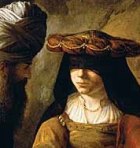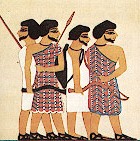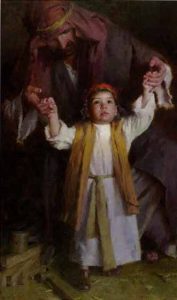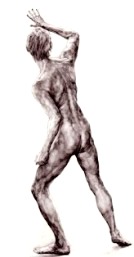Activities for Tamar’s story
Women in movies
Stage 1: Make up a list
Tamar’s story in the Bible is basically about a young woman and the family into which she has married. They exclude her and withhold her legal rights, so that she is left destitute.

‘Pride and Prejudice’: look at the range of personalities, good and bad, in this family
Make a list of your favorite movies about difficult family relationships – especially films about in-laws: fathers- and mothers-in law, and sons- and daughters-in law. You can choose recent films or classics.
If this is a group activity, choose films most people know.
Stage 2: Glance over your list
1. Have you chosen films that are realistic, showing the nitty-gritty of family life, or do you prefer films that are funny but have a message?
2. Do your favorites have both these qualities?
3. What does this say about you and what you need in a story?

‘The Family Stone’: a young woman battles to be accepted by the hostile family of her fiance
Stage 3: Choose your favorite
4. What are the central relationships in this film? Mother/daughter, father/son, friends, sisters, etc?
5. Is the relationship shown in a realistic light?
6. Do any of the scenes remind you of your own life or experiences?
7. Or does the film express what you would like to have in your own relationships?
Stage 4: Think about your choices
Group activity: discuss these questions, making sure everyone in the group has a chance to talk about their ideas.
Single activity: sit down for a few minutes and focus your mind; make a quick list of your favorites; read through the Stage 3 questions, and think about them as you do other tasks in your day.
Seeking Justice
Have you ever been in a situation where you were unjustly treated?
 Describe this event,
Describe this event,
- first by writing a personal journal entry about it,
- then by talking to a Bible study partner.
In the journal entry, describe the event and your personal reaction to it. What happened, and how did you feel about it?
Describe the event to your learning partner, then discuss ways you might have dealt with the unjust treatment you received.
Movies about adapting to the situation
Can you name the movies?

Can you see a connection with Tamar’s story?
ANSWERS HERE (see ‘Tamar’) Can you think of others?
Walking in another person’s shoes
Task 1: Start by reading the Bible story at Genesis 38.
1. What interests you most about the story of Tamar and Judah?
2. In the story, who gets what they want? If you were there, whose side would you be on? Which person would you want to avoid?
3. Why do you think the story was so important to ancient Jewish people? (read about the Levirate Law).

Leather sandals similar to footwear in ancient times
We do not know the motivation of the men in the story.
- Judah was in the throes of grief, having recently lost his wife
- Young Shelah was probably frightened to marry a woman whose first two husbands had died in violent circumstances
- Onan did not want children by Tamar.
Task 2: now try going into the mind of each of these three men. Write a paragraph for each one, explaining your motivations for refusing to follow the Levirate Law.
Task 3: are the characteristics and actions of the people in the story still present in the world? Think of an anecdote to illustrate you opinion.
Paintings of Judah and Tamar
Stage 1
Read the story of Tamar and the Bible text of Genesis 38.
Stage 2

Tamar: paintings has seven famous paintings of the story
Go to Paintings of Tamar. Scroll through the paintings from first to last.
- Which part of the story of Tamar has been the most popular with artists?
- Would this have been your choice?
Artists paint what they want to paint, but they also paint with their audience in mind. Look at the paintings again. Who is the painting directed at?
Explain your reasoning.
Stage 3
If you have chosen some other incident as your personal favorite, ask yourself why this other incident appeals to you more than the scene favored by the artists.
Spend some time quietly thinking about your response.
Researching ancient laws
 The Levirate Law was an attempt to protect single women and widows from poverty. Women could not be ignored or cast out of the tribal family simply because they had not produced a male child. Their husband’s brothers had a duty to support the widow and to see that she received a portion of her dead husband’s inheritance.
The Levirate Law was an attempt to protect single women and widows from poverty. Women could not be ignored or cast out of the tribal family simply because they had not produced a male child. Their husband’s brothers had a duty to support the widow and to see that she received a portion of her dead husband’s inheritance.- The biblical law ‘an eye for an eye, a tooth for a tooth’ tried to limit revenge killings, and stop the blood feuds that were prevalent in the ancient world.
- Use a search engine to learn about laws in the ancient world, particularly the laws of Hammurabi. These laws were carved on stone pillars placed in public places where all could see them, and consult them when necessary – see the photograph of the Stele of Hammurabi at right.
How do these ancient laws contrast with laws in the modern world?
How do we support a childless widow today? Is out way of doing things better or worse?
In depth study of one person’s story

Judah and Tamar, by Kevissimo; see enlargement on Tamar: main page
Choose one of the other characters in the story (see Tamar’s family).
1. What are the main events in the person’s life? Tell the story from their point of view.
2. What were their main qualities? What made them stand out from the crowd?
3. What obstacles did they face? Did they overcome them, or go with the flow?
4. How did they use their abilities to do/not do God’s work?
5. Which part of their story appeals to you most? Why?
Include three short quotations from the Bible texts to illustrate the points you are making.
Focus questions
1. What are the most interesting moments in the story?
2. In the story, who speaks and who listens? Who acts? Who gets what they want? If you were in the story, which person would you want to be friends with? Which person would you want to avoid?
3.  What is God’s interaction with the main characters? What does this tell you about the narrator’s image of God? Do you agree with this image?
What is God’s interaction with the main characters? What does this tell you about the narrator’s image of God? Do you agree with this image?
4. What is happening on either side of the story, in the chapters before and after it? Does this help you understand what is happening?
5. The narrator/editor has chosen to tell some things and leave other things out. What has been left out of the story that you would like to know?
6. Are the characteristics and actions of the people in the story still present in the world? How is the story relevant to modern life, especially your own?
Search Box
![]()
Tamar links
__________
____________
© Copyright 2006
Elizabeth Fletcher











